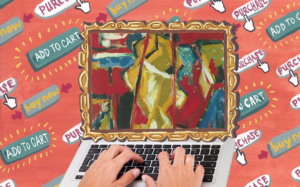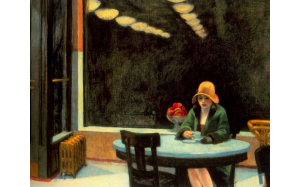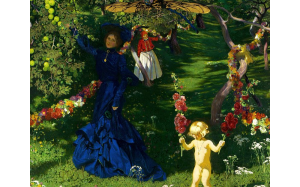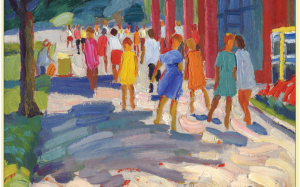Evaluate your art correctly
 In order to realistically assess your creativity, you need to understand how the art business works, and according to which scheme collectors buy works of art. You should also objectively evaluate the significance and quality of your work in connection with the huge amount and variety of art available for sale both online and in galleries. The most important part of this process is the assessment of one’s achievements in the world art and positioning oneself on the art market.
In order to realistically assess your creativity, you need to understand how the art business works, and according to which scheme collectors buy works of art. You should also objectively evaluate the significance and quality of your work in connection with the huge amount and variety of art available for sale both online and in galleries. The most important part of this process is the assessment of one’s achievements in the world art and positioning oneself on the art market.
1. Analyze the art market.
The most important mistake is the tendency to pay too much attention only to that segment of the art world that applies to you and to neglect others or, even worse, exclude the rest as insignificant. If you allow this to happen, your prices can only make sense for you and your inner circle, but have no meaning in the broader context of the art community. The more you know about the overall picture on the art market (what other artists create, how they evaluate and sell their works, who buys, how much and why), the more correctly you will be able to evaluate your art.
2. Do not be guided by emotions when evaluating works of art.
Many artists make the mistake of equating dollar values to intangible or psychological factors, for example, how emotionally attached they are to various works of their art or how much they are afraid of when they are created. They allocate some of their works, and accordingly overestimate prices for them, because it has an internal meaning for them, but in reality these prices may not correlate with the prices for art as a whole. As a result, dealers and collectors who view art more objectively and do not understand these value judgments can take these prices as excessively high or treat your overall pricing structure as confusing or inconsistent. The bad news is that when people are confused by your prices, they tend to shy away from the offer. No one buys that which he does not understand.
Avoid this trap by keeping any art out of the market that you perceive extremely closely. Save it for your personal collection. Another trap is that inflating the prices of some works due to emotional attachment, you can simultaneously lower the prices of your other works that are less important for you. Remember that coherence in pricing is the cornerstone of a successful sale.
3. Objectively evaluate your work in comparison with the work of other artists.
Another mistake artists sometimes make is to confuse subjective opinion with objective judgment when comparing the quality of their art with the quality of the work of other artists. At the same time, they can also ignore external factors that influence the prices of other artists, for example, what their portfolios look like, in which galleries they exhibit, what awards they have, what their reputation is, etc.
Do you think your art is as good as that of Picasso or Warhol, and you value it in millions of dollars? This is the wrong approach. Your art can really be as good as that of a famous artist, but other factors need to be assessed. When it comes to pricing, it’s about the facts, accomplishments and specific details about the artist’s career. In this case, the track record is important, not personal opinions or subjective judgments.
And do not make the mistake of thinking that your art is so unique that nothing else can compare with it. All art is unique. Every artist is unique. Uniqueness, however, has never been and never will be the only criterion for setting prices at any particular level.
4. Be competitive.
No matter how you set your prices, be competitive. Every time a collector buys a work of art from you, he plans to buy work from some other artist. Naturally, you want to increase the amount of your work purchased by him.
The best way to at least stay in business is to make sure that you always evaluate your work as well as other participants in the art market. For example, if you are participating in a group exhibition, provide a work that will be evaluated on a par with the work of other artists. It is better to let your work be distinguished by the technique of writing, and not for monetary reasons.
5. Raise prices wisely.
Another problem artists often face is price increase. The best time for this is when you have achieved a consistent level of success and sales experience that lasts at least six months or more. You must also sell at least half of everything you create over a specific period of time, say, half a year or less. As long as sales continue to be good, and demand remains high, a 10-25% increase in prices every year or two is the norm. Never raise prices based on whims, personal feelings or desires.





